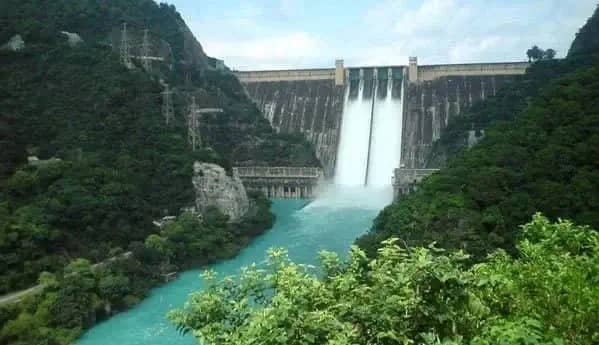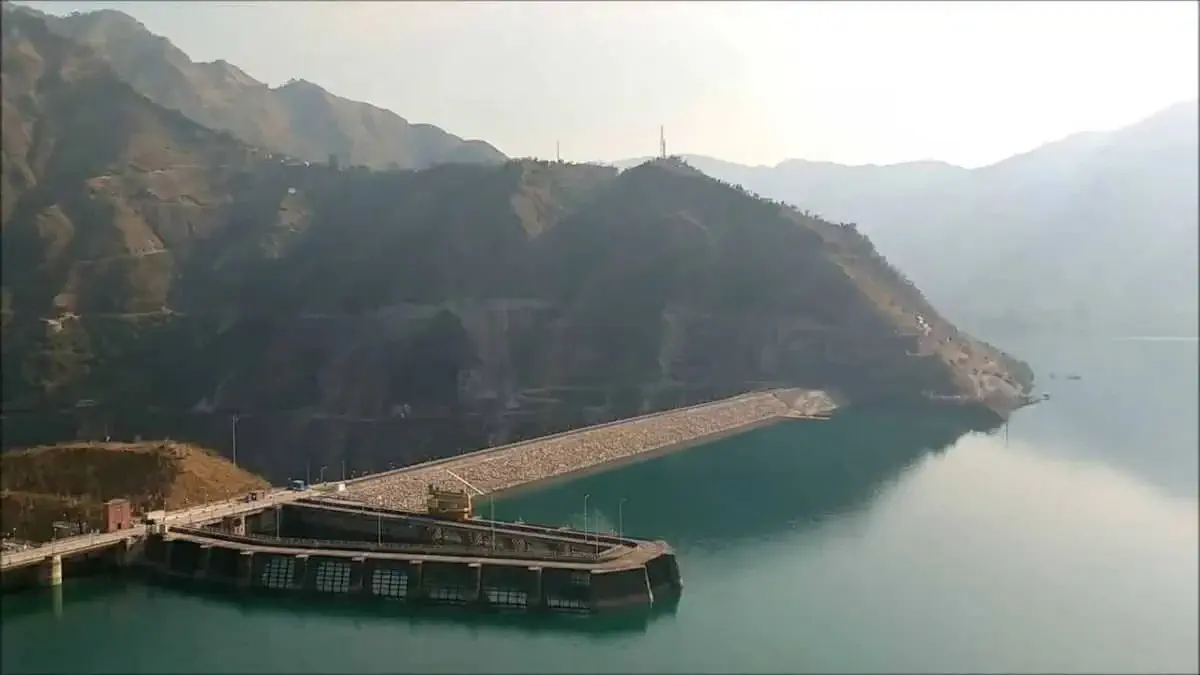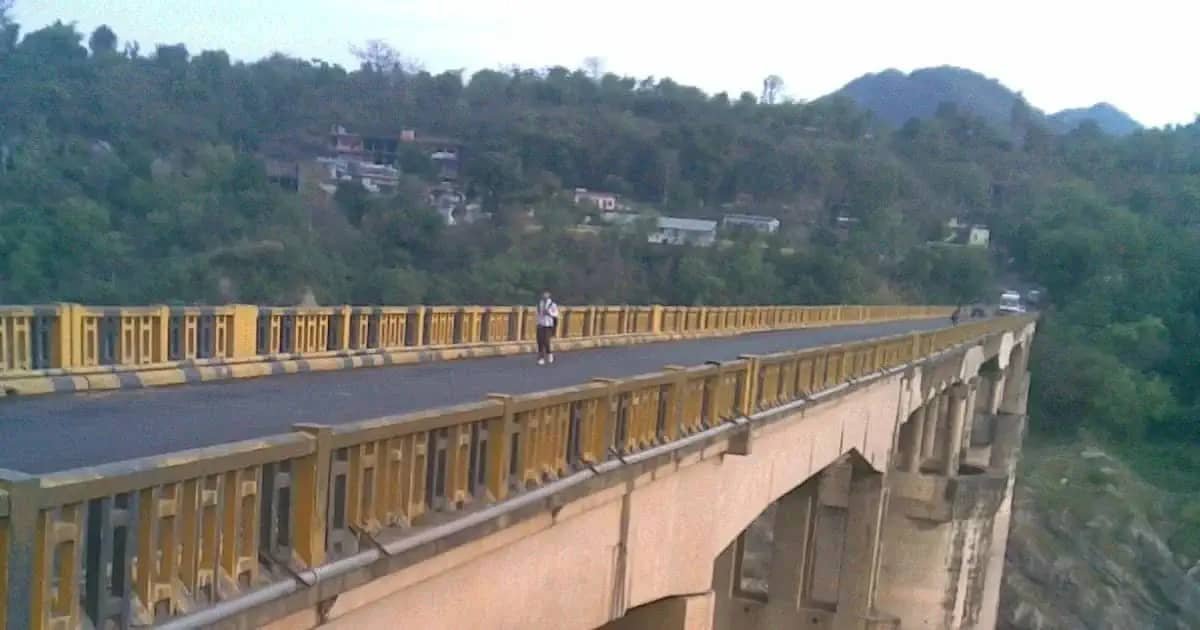Bhakra Nangal Dam is in the Bilaspur district of Himachal Pradesh in India. The dam is built across the Sutlej River in Bhakra village. Bhakra village is now submerged. The dam is a concrete gravity dam. And the dam forms the Gobind Sagar Reservoir which is the third largest reservoir in India. After the dam was built, Jawaharlal Nehru respectfully called it “the new temple of a resurgent India”. One of the major works undertaken by the government after independence was the construction of the Bhakra Nangal Dam. Nangal Dam is the fourth largest dam after Tehri Dam.
Bhakra Nangal Dam Information
Bhakra Nangal Dam’s Official name is Bhakra Dam and its Location is in Bilaspur district, Himachal Pradesh, India. Construction began in 1948 and the Opening date was 1963. Construction cost ₹245.28 crore and the Dam and spillways type of dam is Concrete gravity. Impounds in Satluj River and Height is 741 ft, Length 1,700 ft, The width is 30 ft and the base is 625 ft. Creates Gobindsagar Reservoir with and Total capacity of 7.551 million megalitres and an Active capacity of 6.007 million megalitres. The maximum water depth is 1680 ft and the Installed capacity of 1325 MW.
Jawaharlal Nehru, the country’s first prime minister, poured the first bucket of concrete into the dry Sutlej river on 17 November 1955, saying it was a gift to future generations of workers who built the dam. The dam was completed by the end of 1963 and the successive phases were completed by the early 1970s.
Bhakra Nangal Dam on Which River
The Bhakra Nangal Dam is built across the Sutlej River in the Bilaspur district. Gobind Sagar is the reservoir of Bhakra Dam. In which up to 9.34 billion cubic meters of water can be stored. Gobind Sagar is a 90 km long reservoir spread over an area of 168.35 sq km. It is the first dam in India with a capacity of 12.22 billion cubic meters. 106 km from Bilaspur The dam is 15 km from Nangal town and the Nangal dam is a downstream dam to Bhakra dam. Bhakra Nangal dam is called Bilaspur together.
About Bhakra Nangal Dam History
Bhakra Nangal Dam is the first of the river valley development schemes initiated by the Government of India after independence and is one of the tallest gravity dams in the world. The project is said to have been conceived long before India became an independent nation. There are ten power generators on either side of the dam. Visitors to Bhakra Nangal were banned in 2009 due to security reasons. The agreement for the project was signed by Sir Chhotu Ram, the then Revenue Minister of Punjab, with the Raja of Bilaspur in November 1944 and the project plan was finalized on 8 January. 1945. Preparatory work began in 1946 and construction of the dam began in 1948.
The construction of the dam was commissioned by Sir Louis Dane, the Lieutenant Governor of Punjab. But after independence, it was revived under the leadership of chief architect Rai Bahadur Kunwar Sen Gupta. The control board for the construction of the dam consisted of representatives from the central government and the governments of Punjab, Rajasthan, Bilaspur, and Himachal Pradesh. On 22 October 2013, the Government of India issued a commemorative postage stamp to mark the 50th anniversary of the Bhakra Dam. As successful as India was at the time, it was the only dam in Asia that could generate 1500 MW of electricity.
Bhakra Nangal Dam Features
The Sutlej river flowed through a narrow gorge between two hills, Naina Devi ki Dhar and Ramgarh Dhar, and this site was chosen to dam the river. Here then there was Bhakra village which is submerged in the lake built behind the dam. The purpose of the Bhakra Dam was to provide more hydroelectricity. And also aimed at preventing floods in the Sutlej-Beas river basin and providing irrigation to the surrounding states. Dam also has four spillway gates which are used only when the reservoir level exceeds. Nangal Dam is 10 km downstream of Bhakra Dam.
The Bhakra Canal fed by the Bhakra Dam provides irrigation to 10 million acres of agricultural land in Punjab, Haryana, and Rajasthan. There are ten power generators in Bhakra Dam. The electricity generated is distributed in Himachal Pradesh, Punjab, Haryana, Rajasthan, Chandigarh, and Delhi. Gobind Sagar has fish of various species including the endangered Mahseer and is the main occupation of the local fishermen.
Bhakra Nangal Dam Management Board
The Bhakra Beas Management Board was constituted on 1 October 1967. Its members are appointed by the Government of India and the states of Punjab, Haryana, Rajasthan, Himachal Pradesh, and the Union Territories of Delhi and Chandigarh. It was renamed Bhakra Beas Management Board on 15 May 1976. The Bhakra Beas Management Board regulates, operates, and manages the Bhakra Dam, Dehar Hydroelectric Project, Pong Dam, Ganguwal, and Kotla power stations. It is the second largest dam in India after Tehri Dam. Around 371 villages were submerged during the construction of the dam.








